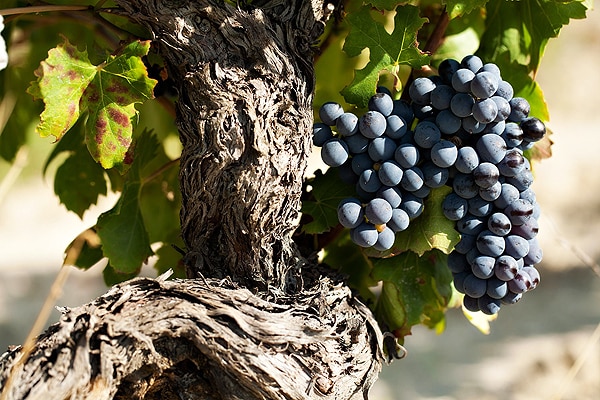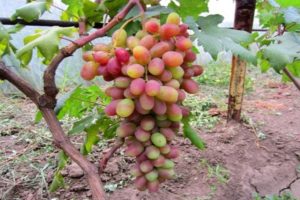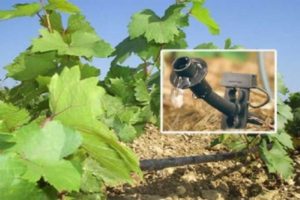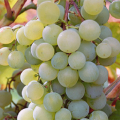Description of the Spanish grape variety Garnacha and characteristics of cultivation and care
The Garnacha grape variety has become widespread due to its universal use not only in the vineyard, but also in winemaking. The plant is strong, grows well in dry and windy areas. The harvest is used to produce high quality wines. When grown in regions with hot climates, a high-alcohol wine is obtained from the grapes. In Spain, the variety is called Garnacha, and in France, Grenache.
Breeding history of the variety
The exact origin of the variety is unknown. Some scholars suggest that the homeland is Catalonia. Then the plant spread to other parts of Spain and moved to the south of France.
At the same time, the inhabitants of Sardinia believe that it was they who developed this variety, known in Italy as Grenaca. And in the 14th century, during the occupation of the island by the Aragons, the plant was transported to Spain.
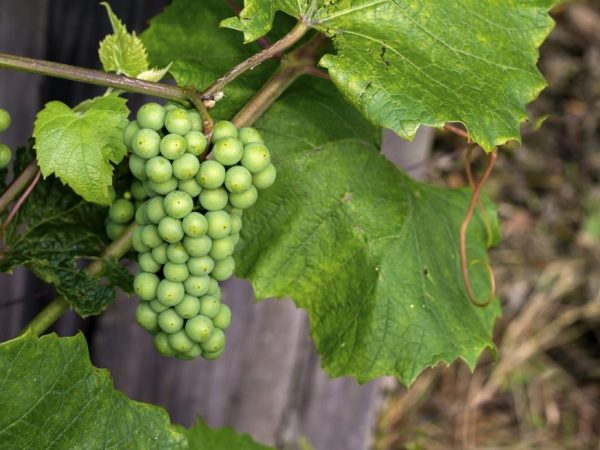
Description of Garnacha grapes
Grenache belongs to the technical varieties intended for the production of rosé and red wines.
Description of the variety:
- high-yielding;
- thermophilic, drought tolerant;
- takes root remarkably on dry soils;
- grows in windy places;
- with an excess of moisture, powdery mildew develops and aphids multiply;
- refers to late ripening varieties;
- vigorous.
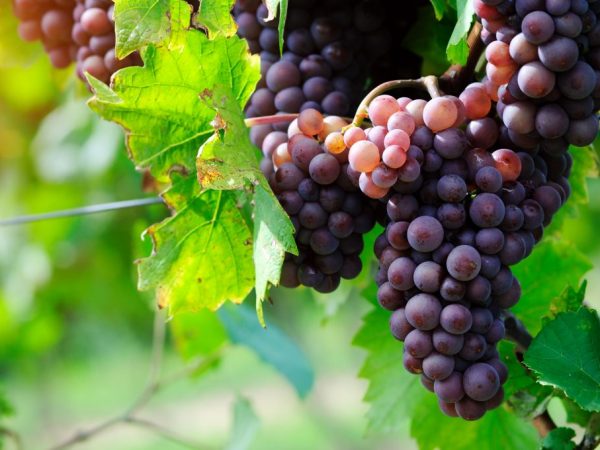
The plant is cultivated in:
- France;
- Spain;
- North Africa;
- southern Italy;
- California.
The most commonly grown red grapes are used to make wine. The white variety Grenache Blanc is less common. It is intended for the production of table white wine and for fresh consumption.
Garnacha wines are endowed with fruity tones, and the taste has a slight sourness.
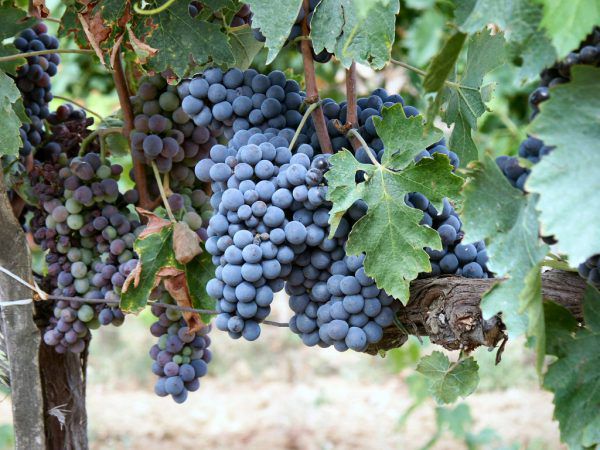
What are the advantages and disadvantages
The advantages of the variety:
- high-yielding;
- tolerates drought;
- unpretentiousness to soils;
- endurance of the vine;
- takes root on dry soil;
- strong root system;
- suitable for wine production.
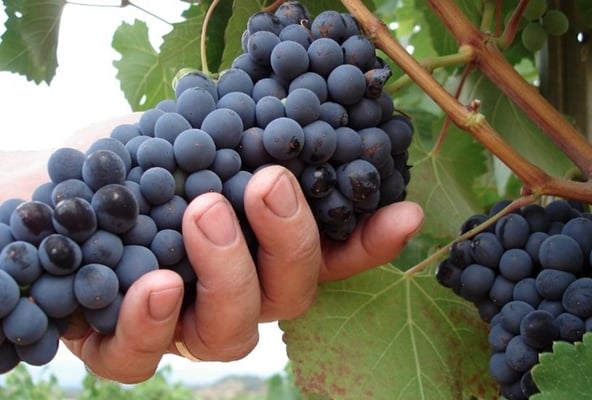
Disadvantages:
- does not like moisture, with an excess of moisture, diseases develop;
- does not tolerate frost, can withstand up to -18 degrees;
- low disease resistance.
The crop has a long growing season, so the berries often fall off in an immature state. But for winemakers this is a positive quality, since the remaining fruits absorb all the most valuable, which significantly affects the taste of the wine.

Distinctive characteristics
Main varietal characteristics:
- medium-sized leaves with sharp teeth;
- vigorous bush;
- the skin of the fruit is dense and thick;
- berries are medium with a pink-purple hue;
- the average number of stepchildren;
- the vine is hardy and ripens well;
- bunches are conical in shape;
- a strong root system allows you to rarely water the plant;
- blooms early;
- berries are high in sugar.
With a bountiful harvest, the quality of the fruit is significantly reduced. With an average yield, the grapes have the best taste.

Planting and ripening dates
For planting, choose the most illuminated place, since the culture requires a lot of sunlight. Planted:
- in the spring;
- in the autumn.
For planting, the soil under the plant needs dry; a distance of one and a half meters is maintained between the vines.
The bush blooms early, but the growing season is long. Therefore, the ripening period is late.

Care advice
The most important year for growth is the first. Proper care will help the culture to take root and yield a good harvest as a result. To do this, follow the recommendations:
- The planted plant will need support, which will increase with the growth of the grapes.
- The earth is constantly weeded and loosened.
- Watering is rare. Excessive watering is harmful to the plant.
- Be sure to carry out autumn pruning. The procedure is carried out after the movement of the juice in the plant ends. Only the lower shoots are cut, which gives the plant a fan shape.
- Leaves are examined regularly. This procedure will help you notice the occurrence of diseases in time and take the necessary measures.
Subject to the recommendations, the culture will delight you with a bountiful harvest of delicious fruits.
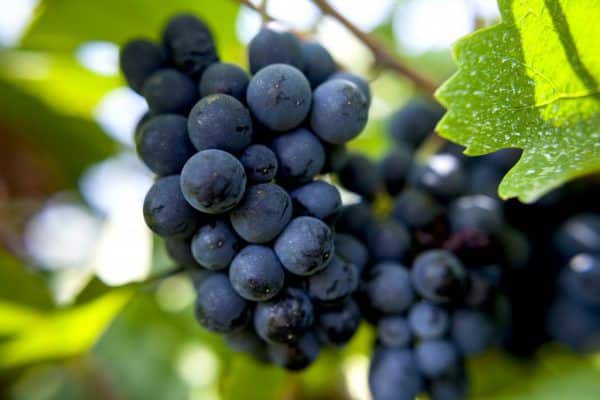
Reproduction methods
At home, an effective breeding method is cuttings. For this:
- In the spring, cuttings are cut with a sharp blade. The procedure is carried out before flowering.
- The thickness of the cutting is 0.01 m, the length is 0.4 m. There should be 4 buds on the cutting.
- The workpiece is placed in warm water for a day.
- Cut into two parts, leaving two buds on each.
- At the bottom of the workpiece, an oblique cut is made and planted in a pot.
- In the fall, they are transplanted to a permanent place.
This method has a high survival rate and retains varietal qualities.
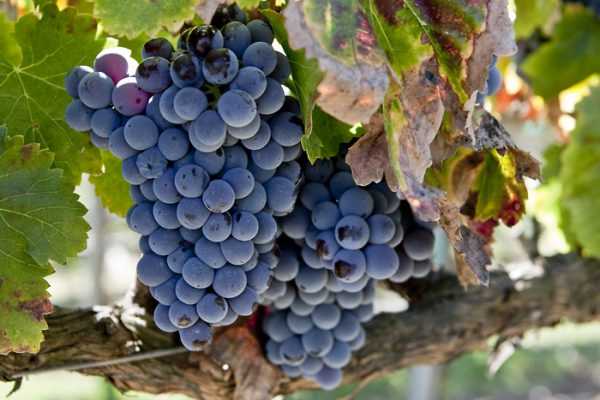
Prevention of diseases and pests
The vine is protected from excess moisture on the surface and underground. Excessive watering leads to:
- the appearance of powdery mildew:
- reproduction of aphids.
For prevention, the plant is treated with fungicides.
